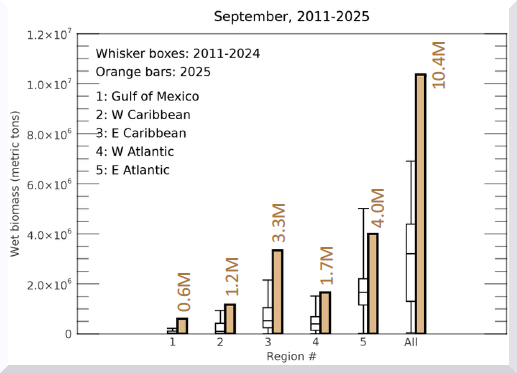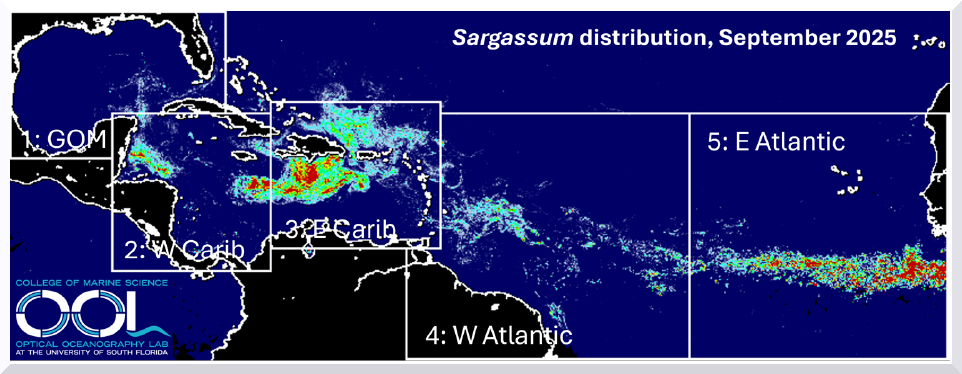A perspective for the Caribbean Sea and Gulf of America* by the University of South Florida Optical Oceanography Lab
The map above shows the average Sargassum abundance for the month of September 2025, with warm colors representing higher abundance. The top color (red) indicates that 0.4% of the ocean surface is covered by Sargassum, meaning that Sargassum clumps and mats are scattered here and there in the location. The Sargassum abundance for each region is compared with historical values in the same month of 2011 – 2024 in the whisker box plot below, where horizontal bars in each vertical box indicate minimum, 25%, 50%, 75%, and maximal historical values, respectively.

As in previous years, the momentum of Sargassum decline continued in September, with total Sargassum amount in each of the five regions decreased. The decline was substantial in all but the East Atlantic region, with total Sargassum amount more than halved. Most Sargassum is now in the eastern Caribbean region, followed by the East Atlantic. In the Gulf of America, Sargassum amount decreased from 1.9M metric tons in August to 0.6 M metric tons in September, yet due to changes in ocean circulation the amount of Sargassum reaching the Straits of Florida increased, likely causing more inundations along the SE coast of Florida. Despite the overall declines, total Sargassum amount in every but the East Atlantic region still exceeded the historical record for the month of September, and inundation pressure around many Caribbean regions is still high.
Looking ahead: Total Sargassum amount in all regions is likely to continue to decline, possibly reaching the annual minimum around October – November. However, because the absolute amount is still much higher than any previous September, Sargassum inundation of variable degrees will continue to occur, especially along the Mexican Caribbean coast and around Haiti, Dominican Republic, Puerto Rico, U.S. Virgin Islands, among others. On the other hand, whether a beach or small region receives large amount of Sargassum depends on local factors that are difficult to predict, including winds and ocean currents.
All previous monthly bulletins as well as daily imagery can be found under the Sargassum Watch System (SaWS).



